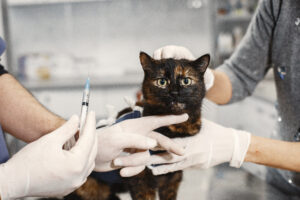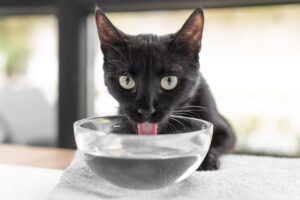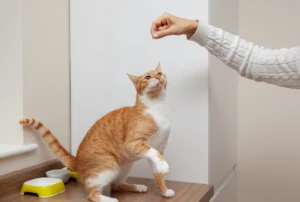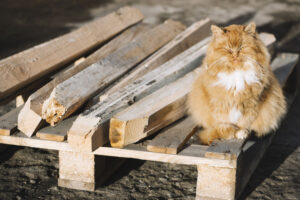Introduction
The long hair tortoiseshell cat has become one of the most fascinating and debated feline companions in recent years. With their striking multi-colored coats and flowing fur, these distinctive cats have captured the hearts of many pet lovers while simultaneously stirring up numerous controversies in the cat breeding and ownership communities. Their unique genetics, temperament, and care requirements make the long hair tortoiseshell cat a subject of endless discussion among feline enthusiasts.
As a potential owner or admirer of the long hair tortoiseshell cat, understanding these controversies can help you make informed decisions about whether this remarkable feline is right for your home. In this comprehensive guide, we’ll explore the five major controversies surrounding these beautiful cats, from their distinctive personalities to their specific care needs.
Whether you’re considering adopting a long hair tortoiseshell cat, already own one of these magnificent creatures, or simply find yourself curious about this particular feline variety, this article will provide valuable insights into what makes the fluffy tortoiseshell cat such a topic of fascination and debate.

What Exactly Is a Long Hair Tortoiseshell Cat?
Before diving into the controversies, let’s clarify what defines a long hair tortoiseshell cat. A tortoiseshell (or “tortie”) is not a breed but rather a coat pattern characterized by a mottled combination of two colors, typically black and red (orange). The long hair tortoiseshell cat features this distinctive pattern on a luxurious, flowing coat that requires regular maintenance.
The long hair tortoiseshell cat can appear in various breeds, including Maine Coon, Persian, Ragdoll, and Norwegian Forest Cat, among others. Some long hair tortoiseshell cats are mixed breeds with no specific pedigree. Regardless of their breed background, these cats share the striking tortoiseshell pattern on their long, magnificent coats.
It’s important to distinguish between a long hair tortoiseshell cat and a long hair calico vs tortoiseshell. While both feature multiple colors, calicos typically have distinct patches of colors that include white, while torties have a more blended, mottled appearance of two colors without white (or with minimal white).
Now, let’s explore the five major controversies that make the long hair tortoiseshell cat such a fascinating subject of debate.
Controversy #1: The “Tortitude” Phenomenon
Perhaps the most discussed controversy surrounding the long hair tortoiseshell cat is the infamous “tortitude.” This term refers to the allegedly distinctive personality traits that tortoiseshell cats, including long-haired varieties, are said to possess.
The Spirited Personality Debate
Many owners and breeders claim that the long haired tortie cat personality is characterized by:
- Strong-willed and independent nature
- Heightened sensitivity and emotional intelligence
- Vocal communication and expressiveness
- Fierce loyalty to chosen humans
- Occasional temperamental behavior
Some dedicated tortie owners insist that their long hair tortoiseshell cats demonstrate more sass, attitude, and strong opinions than cats with other coat patterns. These owners often share anecdotes about their cat’s dramatic reactions, specific preferences, and unwillingness to compromise—all hallmarks of the famous “tortitude.”

Scientific Perspective
While countless personal accounts describe the distinctive long haired tortoiseshell cat temperament, scientific evidence supporting these personality traits is limited. A 2016 study published in the Journal of Applied Animal Behaviour Science found some correlations between coat color and behavior, but researchers caution against making sweeping generalizations about personality based solely on coat pattern.
Dr. Elizabeth Stelow, a veterinary behaviorist at UC Davis, notes: “While some correlation exists between coat color and behavior, individual personalities vary greatly among cats, regardless of their appearance.”
Owner Bias and Perception
Some feline behavior experts suggest that owners of long hair tortoiseshell cats might perceive or expect certain personality traits because of the widespread cultural beliefs about “tortitude.” This could potentially lead to confirmation bias, where owners notice and remember behaviors that confirm their expectations while overlooking contradictory evidence.
Whether scientifically proven or not, the long haired tortie cat personality debate continues to rage among cat enthusiasts, with passionate arguments on both sides.
Controversy #2: Gender and Genetics
Another major controversy surrounding the long hair tortoiseshell cat involves their fascinating genetics and the gender distribution among these distinctive felines.
The Female Dominance
The long hair tortoiseshell female cat is the norm, not the exception. This is because the tortoiseshell pattern results from X-chromosome-linked genes controlling coat color. Since females have two X chromosomes, they can express two different color genes simultaneously (usually black and red), creating the tortoiseshell pattern.
Males, with their XY chromosomes, typically can only express one coat color gene. This makes male tortoiseshell cats extremely rare—approximately 1 in 3,000 tortoiseshell cats are male. When they do occur, male torties typically have genetic abnormalities, such as Klinefelter syndrome (XXY chromosomes).
The Rarity Controversy
The extreme rarity of male long hair tortoiseshell cats has created several controversies:
- Breeding ethics: Some breeders have attempted to specifically produce male torties, which raises ethical concerns about intentionally breeding cats with genetic abnormalities.
- Pricing disputes: The long haired tortoiseshell cat price can be significantly inflated for males, with some breeders charging thousands of dollars for these genetic rarities—a practice many cat welfare advocates criticize.
- Health concerns: Male long hair tortoiseshell cats often face health issues related to their unusual chromosomal makeup, including sterility and developmental problems.
Cultural Beliefs

In some cultures, male tortoiseshell cats are considered lucky or magical because of their rarity. In the United Kingdom, they’re sometimes called “money cats” because of the belief that they bring good fortune to their owners.
The gender imbalance and genetic uniqueness of the long hair tortoiseshell cat continue to fascinate scientists and cat lovers alike, fueling ongoing discussions about feline genetics and ethical breeding practices.
Controversy #3: Grooming Demands and Care Requirements
The stunning coat of a long hair tortoiseshell cat is undeniably beautiful, but it comes with significant maintenance requirements that spark debates among cat owners and breeders about proper care.
The Grooming Challenge
Long haired tortoiseshell cat grooming is considerably more demanding than for short-haired varieties. Their thick, luxurious fur requires:
- Daily or at least several-times-weekly brushing to prevent mats and tangles
- Regular attention to “trouble spots” where matting commonly occurs (armpits, behind ears, etc.)
- Seasonal monitoring for excessive shedding during coat changes
- Occasional professional grooming, especially for cats with particularly thick undercoats
Some long hair tortoiseshell cat owners report spending 30+ minutes daily on grooming routines. This significant time commitment has sparked debates about whether these high-maintenance cats are suitable for busy households or first-time cat owners.
Health Implications of Improper Grooming
The controversy extends to the potential health consequences of inadequate grooming:
- Painful mats that can pull on skin
- Hairballs from excessive ingestion of loose fur during self-grooming
- Skin infections developing under matted fur
- Fecal matter becoming trapped in fur around the hindquarters
Veterinarians report seeing long hair tortoiseshell cats with severe matting that requires sedation and complete shaving under anesthesia—a stressful and potentially dangerous procedure that could be avoided with proper maintenance.
Natural vs. Assisted Grooming
Another aspect of this controversy involves differing philosophies about grooming:
Some owners believe in minimal intervention, arguing that cats are natural self-groomers who should be allowed to maintain their own coats with minimal human assistance. Others advocate for intensive human grooming routines to supplement the cat’s self-care.
Dr. James Harrison, a veterinary dermatologist, recommends a balanced approach: “While cats are indeed fastidious self-groomers, the long hair tortoiseshell cat has specific needs that exceed what the cat can manage alone. Regular, gentle brushing is essential for their health and comfort.”
Controversy #4: Health Issues and Lifespan Concerns
The long hair tortoiseshell cat faces unique health considerations that have become subjects of debate among veterinarians, breeders, and owners.
Genetic Health Concerns

Some studies suggest correlations between coat color and certain health conditions. The controversy arises from disagreement about whether these correlations represent causation or mere coincidence:
- Skin sensitivity: Some veterinary dermatologists report higher incidences of skin allergies and sensitivities in tortoiseshell cats, though comprehensive studies are limited.
- Dental issues: Anecdotal evidence from some veterinary practices suggests higher rates of dental problems in tortoiseshell cats, though this remains scientifically unproven.
The long haired tortoiseshell cat health issues debate continues, with some experts arguing that coat color has no bearing on overall health, while others point to potential genetic linkages that deserve further investigation.
Lifespan Debates
Another controversial area concerns the long haired tortoiseshell cat lifespan. While the average domestic cat lives 12-18 years, some tortie enthusiasts claim their cats consistently live longer, with lifespans extending into the early 20s.
Veterinary science has not conclusively proven any connection between tortoiseshell coloration and extended lifespan. The controversy stems from whether these reports represent selection bias (successful cases being more frequently reported) or a genuine biological advantage.
Factors that may influence the long haired tortoiseshell cat lifespan include:
- Genetic background and breed influences
- Indoor vs. outdoor lifestyle
- Diet and nutrition
- Preventative veterinary care
- Environmental enrichment
Dr. Sarah Chen, feline geriatric specialist, notes: “While we haven’t established a direct link between tortoiseshell coloration and longevity, we do know that proper care of long-haired cats, including regular grooming, dental care, and weight management, can significantly extend lifespan regardless of coat pattern.”
Breed-Specific Considerations
Since the long hair tortoiseshell cat pattern can appear in various breeds, health considerations may vary based on the cat’s breed background. For example:
- A long hair tortoiseshell cat with Persian lineage may face brachycephalic (flat-faced) health challenges
- Maine Coon torties may be prone to hypertrophic cardiomyopathy
- The long hair tortoiseshell mix from unknown backgrounds may benefit from genetic diversity
The debate about whether to focus on coat pattern or breed-specific health concerns continues among veterinary professionals.
Controversy #5: Adoption Challenges and Breeder Ethics
The final major controversy surrounding the long hair tortoiseshell cat involves adoption patterns, breeder practices, and ethical considerations.
The “Black Cat Syndrome” Extension
Many animal shelters report that black cats stay longer in shelters before adoption—a phenomenon known as “Black Cat Syndrome.” Some animal welfare advocates suggest that long hair tortoiseshell cats, especially those with predominantly darker tortoiseshell patterns, face similar adoption challenges despite their unique appearance.
Contrarily, other shelter workers report that the distinctive appearance of a long hair tortoiseshell cat makes them highly desirable, with some adopters specifically seeking out these cats. This discrepancy in experiences has sparked debate about adoption patterns and public perception of these distinctive cats.
Breeding Controversies
The breeding of long hair tortoiseshell cats raises several controversial issues:
- Intentional breeding for coat pattern: Some breeders specifically aim to produce long hair tortoiseshell kittens by breeding cats with the necessary genetic makeup. Critics argue this places aesthetics above other important considerations like temperament and health.
- Pricing ethics: The long haired tortoiseshell cat price can vary dramatically, with some breeders charging premium prices for these cats based solely on their coat pattern. Animal welfare advocates question whether this practice encourages breeding for profit over feline welfare.
- Health testing practices: Responsible breeders conduct genetic health testing before breeding, but standards vary widely. The controversy centers on whether adequate health testing is being performed for long hair tortoiseshell cats, especially in non-pedigree breeding programs.
Adoption vs. Purchase Debate

The long hair tortoiseshell cat adoption vs. purchase debate mirrors larger conversations in the pet community about ethical acquisition of companion animals:
- Adoption advocates point to the many long hair tortoiseshell cats awaiting homes in shelters and rescue organizations
- Breeder advocates argue that responsible breeding practices preserve desirable traits and provide predictability in health and temperament
Jessica Miller, director of Happy Paws Rescue, observes: “We see numerous gorgeous long hair tortoiseshell cats in our shelter system. These cats have the same wonderful potential as any purposely bred cat, and adoption gives them a second chance at life.”
Caring for Your Long Hair Tortoiseshell Cat
Despite the controversies, the long hair tortoiseshell cat remains a beloved companion for many cat enthusiasts. If you’ve decided to welcome one of these unique felines into your home, here are some essential care tips:
Grooming Essentials
To maintain your long hair tortoiseshell cat’s beautiful coat:
- Regular brushing: Invest in high-quality grooming tools designed for long-haired cats, including slicker brushes, wide-toothed combs, and possibly a deshedding tool.
- Establish a routine: Begin grooming sessions when your cat is relaxed, perhaps after playing or eating. Keep sessions short and positive, gradually extending them as your cat becomes more comfortable.
- Professional help: Consider occasional professional grooming, especially if your cat’s coat is particularly thick or prone to matting.
- Bathing considerations: While most cats self-clean effectively, long-haired cats occasionally benefit from baths. Use cat-specific shampoo and ensure thorough drying afterward.
Health Monitoring
To address potential long haired tortoiseshell cat health issues:
- Regular veterinary checks: Schedule twice-yearly wellness exams to catch potential issues early.
- Dental care: Implement a dental hygiene routine that includes brushing with cat-specific toothpaste or dental treats approved by your veterinarian.
- Weight management: Monitor your cat’s weight carefully, as excess weight can be especially problematic for long-haired cats who may struggle to groom properly.
- Parasite prevention: Maintain regular flea prevention, as parasites can be particularly difficult to detect in long, dense fur.
Environmental Enrichment
To keep your long hair tortoiseshell cat mentally and physically stimulated:
- Interactive play: Engage in daily play sessions that allow your cat to express natural hunting behaviors.
- Climbing opportunities: Provide cat trees or shelving that allows your cat to observe their environment from elevated positions.
- Scratching outlets: Offer a variety of scratching surfaces to maintain nail health and satisfy natural scratching instincts.
- Quiet retreats: Ensure your cat has access to peaceful spaces where they can retreat when feeling overwhelmed.
Long Hair Tortoiseshell Cat vs. Other Varieties
Understanding how the long hair tortoiseshell cat compares to other varieties can help potential owners make informed decisions:
Long Hair Calico vs Tortoiseshell
The key difference lies in the presence of white:
- Long hair tortoiseshell cats have mottled coats of two colors (typically black and red/orange) with minimal or no white
- Long hair calico cats have the same colors but with distinctive white patches making up a significant portion of their coat
Both share similar care requirements, though some owners report subtle personality differences between calicos and torties.
Dilute Tortoiseshell Variants
The long hair dilute tortoiseshell cat features a softer color palette:
- Instead of black and red, these cats display blue (diluted black) and cream (diluted red)
- The dilute coloration results from specific genetic factors affecting pigment intensity
- Care requirements remain the same, though some find the dilute pattern less visually striking
Short Hair vs. Long Hair Torties
When comparing short-haired and long-haired tortoiseshell cats:
- Short-haired varieties require significantly less grooming
- Long-haired torties may shed more seasonally
- The tortoiseshell pattern often appears more blended in long-haired cats due to the way the fur layers
Finding Your Perfect Long Hair Tortoiseshell Cat
If you’re considering bringing a long hair tortoiseshell cat into your life, here are some avenues to explore:
Rescue and Adoption
The long hair tortoiseshell cat adoption process typically involves:
- Visiting local shelters or browsing online adoption listings
- Meeting cats in person to assess personality compatibility
- Completing an adoption application and home check
- Paying reasonable adoption fees that typically cover initial veterinary care
Many rescue organizations like PetsPump’s Recommended Rescues specialize in helping potential owners find their perfect feline match.
Responsible Breeders
If you choose to purchase from a breeder, ensure they:
- Prioritize health testing and genetic screening
- Raise kittens in enriched, home environments
- Provide health guarantees and lifetime support
- Are transparent about their breeding practices
- Charge reasonable prices that reflect quality care rather than exploiting the long haired tortoiseshell cat price premium
Questions to Ask
Whether adopting or purchasing, important questions include:
- What is the cat’s medical history?
- For kittens: What socialization experiences have they had?
- What is their current diet and grooming routine?
- Do they have any known behavioral challenges?
- For purebreds: What health testing has been done on the parents?
Conclusion
The long hair tortoiseshell cat stands as one of the most visually striking and personality-rich feline companions available. While controversies surround their temperament, genetics, care requirements, health, and acquisition, these magnificent cats continue to captivate cat lovers worldwide.
Whether you call them long hair tortie cats, fluffy tortoiseshell cats, or simply “torties,” these felines offer devoted companionship wrapped in a package of remarkable beauty. Their distinctive appearance and often spirited personalities make them unforgettable additions to any cat-loving household.
If you’re considering welcoming a long hair tortoiseshell cat into your home, approach the decision with an understanding of the specific needs these cats may have. With proper care, attention, and love, your long hair tortoiseshell cat can thrive as a beloved family member for many years.
For more information about cat care, breeds, and adoption resources, explore our other articles at PetsPump:
- Complete Guide to Cat Nutrition
- Understanding Cat Behavior: Myths and Facts
- Top Grooming Tools for Long-Haired Cats
- Adopting vs. Buying: Making the Right Choice
- How to Choose the Best Cat Food
Remember that each long hair tortoiseshell cat is a unique individual, regardless of the patterns and tendencies associated with their distinctive coat. The joy of cat companionship comes from discovering and embracing your pet’s individual personality, preferences, and quirks.
FAQs About Long Hair Tortoiseshell Cats
Q: What breed is a long hair tortoiseshell cat? A: The long hair tortoiseshell cat is not a specific breed but rather a coat pattern that can appear in many breeds including Maine Coons, Persians, Norwegian Forest Cats, and mixed-breed cats. The tortoiseshell pattern is defined by a mottled combination of black and red (orange) fur.
Q: Are long hair tortoiseshell cats rare? A: Female long hair tortoiseshell cats are relatively common, but male long hair tortoiseshell cats are extremely rare (approximately 1 in 3,000) due to the X-chromosome-linked genetics controlling the tortoiseshell pattern.
Q: Do long hair tortoiseshell cats have special personalities? A: Many owners claim that long haired tortie cat personality is distinctive, often described as having “tortitude”—being strong-willed, vocal, and opinionated. While anecdotal evidence supports this, scientific studies have shown limited correlation between coat color and personality.
Q: How much grooming does a long hair tortoiseshell cat need? A: Long haired tortoiseshell cat grooming requires significant attention—typically brushing several times per week or daily during shedding seasons. Professional grooming every few months may also be beneficial for maintaining coat health.
Q: What health issues are common in long hair tortoiseshell cats? A: Long haired tortoiseshell cat health issues largely depend on the underlying breed rather than coat color. However, all long-haired cats face potential issues with hairballs, matting, and difficulty maintaining proper hygiene without human assistance.
Q: What is the difference between a calico and a tortoiseshell cat? A: The primary difference in long hair calico vs tortoiseshell cats is the presence of white. Tortoiseshell cats have mottled coats of two colors (typically black and red) with minimal or no white, while calicos have the same colors plus significant white patches.
Q: How long do long hair tortoiseshell cats live? A: The long haired tortoiseshell cat lifespan typically ranges from 12-18 years, though some live into their early 20s with proper care. Lifespan is more influenced by genetics, diet, lifestyle, and healthcare than by coat pattern.
Q: Are tortoiseshell cats more expensive? A: The long haired tortoiseshell cat price varies widely depending on whether the cat is from a shelter or breeder, the cat’s breed background, and whether the cat is male (extremely rare) or female. Adoption fees from shelters typically range from $50-200, while purebred tortoiseshell cats from breeders can cost $500-2,000+.
Q: Are long hair tortoiseshell cats good for families with children? A: Many long hair tortoiseshell cats make excellent family pets. However, individual personality is more important than coat pattern. When adopting, ask about the specific cat’s history with children and temperament to ensure a good match.
Q: How can I find a long hair tortoiseshell cat for adoption? A: Long hair tortoiseshell cat adoption opportunities can be found through local animal shelters, rescue organizations, breed-specific rescues, and websites like Petfinder.com. For the best chance of finding your perfect match, be patient and visit multiple shelters or check adoption listings regularly.
2016 study published in the Journal of Applied Animal Behaviour Science






